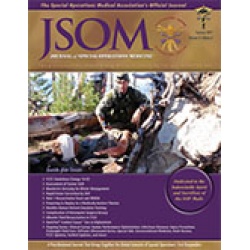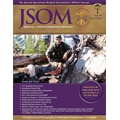Stress Fractures: Etiology, Epidemiology, Diagnosis, Treatment, and Prevention
Knapik JJ, Reynolds K, Hoedebecke KL 17(2). 120 - 130 (Journal Article)
Stress fractures are part of a continuum of changes in healthy bones in response to repeated mechanical deformation from physical activity. If the activity produces excessive repetitive stress, osteoclastic processes in the bone may proceed at a faster pace than osteoblastic processes, thus weakening the bone and augmenting susceptibility to stress fractures. Overall stress fracture incidence is about three cases per 1,000 in active duty Servicemembers, but it is much higher among Army basic trainees: 19 per 1,000 for men and 80 per 1,000 for women. Well-documented risk factors include female sex, white ethnicity, older age, taller stature, lower aerobic fitness, prior physical inactivity, greater amounts of current physical training, thinner bones, cigarette smoking, and inadequate intake of vitamin D and/or calcium. Individuals with stress fractures present with focal tenderness and local pain that is aggravated by physical activity and reduced by rest. A sudden increase in the volume of physical activity along with other risk factors is often reported. Simple clinical tests can assist in diagnosis, but more definitive imaging tests will eventually need to be conducted if a stress fracture is suspected. Plain radiographs are recommended as the initial imaging test, but magnetic resonance imaging has higher sensitivity and is more likely to detect the injury sooner. Treatment involves first determining if the stress fracture is of higher or lower risk; these are distinguished by anatomical location and whether the bone is loaded in tension (high risk) or compression (lower risk). Lowerrisk stress fractures can be initially treated by reducing loading on the injured bone through a reduction in activity or by substituting other activities. Higher-risk stress fractures should be referred to an orthopedist. Investigated prevention strategies include modifications to physical training programs, use of shock absorbing insoles, vitamin D and calcium supplementation, modifications of military equipment, and leadership education with injury surveillance.


 English
English 




